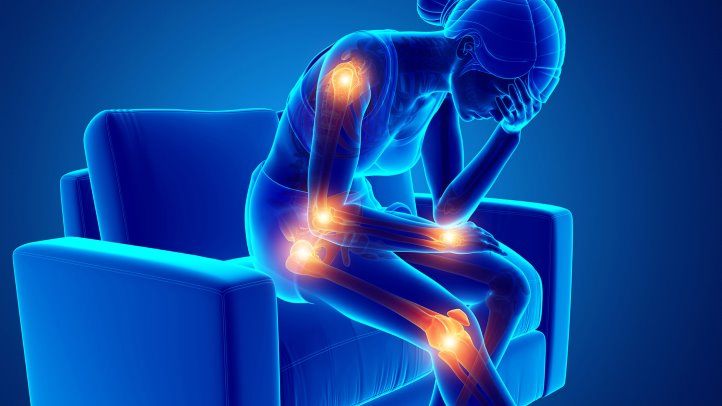What is Arthritis?

People commonly understand arthritis to be joint pain. Let us understand in detail what it is all about. Within the human body, there are cartilages in the joint bones. Cartilages are connective tissues and connect the joints and because of the cartilages we can rotate or move our joints. In simple words, we run, walk, swim and move because of the cartilages. Due to wear and tear and aging, inflammation develops in cartilage. This is called Arthritis.
Symptoms
- Severe and constant joint pain. When we think of joint pain, we think only about the joints in the legs and hands. However, even the small joints in fingers, chin, etc. face the risk of arthritis.
- Arthritis can lead to swelling in the joints.
- Visible redness in the joints
- Stiffness in joints which makes bending or moving impossible.
- Tiredness- Most arthritis patients will have a poor night of sleep due to unbearable pain. This results in tiredness. Also moving a small distance causes great pain which is also a reason for tiredness.
- Absence of appetite
Types
There are over 100 types of Arthritis. Listed below are some of the more popular types
- Osteoarthritis: The damaged cartilage creates a sound when you move. It is a common type of arthritis involving joint pain. Excessive wear and tear and obesity are the main reasons for this.
- Rheumatoid Arthritis: When the immune system starts affecting your body you face this. The joint bones are targeted by the immune system in this case. If treatment is not taken properly, it will severely damage the joints.
- Psoriatic Arthritis: In this type, the skin becomes patchy red and white scales. People who are suffering from Psoriasis have a high risk of getting this type of arthritis.
- Gout: When the kidney is not able to process uric acid, it packs them like crystals in between joint bones. This is gout. It creates sharp pain. Ignoring gout can eventually lead to kidney failure.
Facts
The vast majority of people think Arthritis is not related to age. Even young people are affected by this disease.
This disease does not have any gender discrimination too. It can cause various permanent health issues like disability, metabolic disorders, infection in the nervous system and immunity disorders.
Treatment
- Medication: Medicines can generally reduce the pain, swelling, and redness to a good extent. There are apps to track your daily dosages. When detected at an early stage, analgesic drugs are sufficient. However, when the infection causes too much pain corticosteroids are administered.
- Surgery: When movement becomes a big issue, people can opt for joint operation. The recovery is slightly longer than a course of medication. You will need to exercise after the surgery which a priority and must be done without fail.
- Natural remedies: Very few opt for natural treatment. Turmeric, capsicum, ginger, etc. have a good impact when digested. Besides applying oils extracted from avocado, soybean, etc. can help. Consuming food that is rich in omega three fatty acids can help in reducing the stiffness to joints.